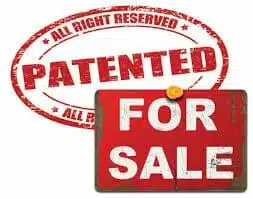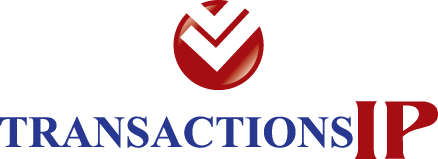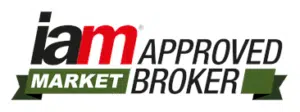Transaction Services
Patent Sales
Why use a Patent Broker?
Patent brokers specialize in the buying, selling, and licensing of patents. They serve as intermediaries between patent holders and potential buyers or licensees, facilitating transactions to help parties realize the value of their intellectual property. Patent Brokers enable successful transactions at maximize value to sellers.
Overall, patent brokers play a crucial role in bridging the gap between inventors or patent holders and companies that may benefit from the technology, thereby facilitating innovation and commercialization. Patent Brokers enable successful transactions at maximize value to sellers.
TransactionsIP represents individuals, small companies and large enterprises, to maximize their returns from the SALE of their PATENTS.
Contact us at (561) 504-8762 or email [email protected]. Please include Patent numbers.
Patent Sales Environment
 Currently, there are vast pools of underutilized patents. Although these IP assets are looking for various markets, there is a disconnect between the seller and buyer. Both sides are looking to maximize revenue and they are at odds. In addition, there is no basis for fair value (such as the Kelly Blue Book™ for cars). Even after assessing the fair value, patents are rarely translated well from legal documents to a marketing document. This is where TransactionsIP comes in. We can come up with a marketing strategy for your Patents and Technology, and then work with both the buyer and seller (you) to ensure a fair monetary amount can be agreed upon by both parties. Of course, as our client, we will be looking to maximize the amount of money you receive from patent sales.
Currently, there are vast pools of underutilized patents. Although these IP assets are looking for various markets, there is a disconnect between the seller and buyer. Both sides are looking to maximize revenue and they are at odds. In addition, there is no basis for fair value (such as the Kelly Blue Book™ for cars). Even after assessing the fair value, patents are rarely translated well from legal documents to a marketing document. This is where TransactionsIP comes in. We can come up with a marketing strategy for your Patents and Technology, and then work with both the buyer and seller (you) to ensure a fair monetary amount can be agreed upon by both parties. Of course, as our client, we will be looking to maximize the amount of money you receive from patent sales.
What We Do For You
TransactionsIP is a leading Patent Brokerage firm specializing in selling Core Patents with a Grant Back License, and Non-Core Patents. The ultimate goal is cash generation for the client.
Sell Your Patents
As a leading patent brokerage company, we are in constant communication with companies that want to acquire patent portfolios. The technical areas below are in particularly high demand. In most cases, we can obtain a license grant back to the seller, so divesting patents doesn’t need to be limited only to those inventions that you are no longer practicing yourself. Therefore, we are actively seeking to represent patent holders to monetize their inventions.
Please submit patents using the Brokerage Sales Questionnaire, and return to it to [email protected]. We will perform an analysis and help determine the best path of action. A follow up call will likely be scheduled to discuss recommended next steps.
Background: If you own patents that you think are being practiced by a company, please let us know by completing the brokerage sales questionnaire below and sending it to us. We will proceed with a preliminary review and analysis at no cost or obligation to you to assess the potential of monetizing your patents.
The following guidelines will help you determine which patents are likely to have the greatest value:
The portfolio must contain at least one issued US patent. “Patent pending” alone are difficult to sell, but in conjunction with an issued patent can add value.
The patent(s) should be practiced by industry. Patents are negative rights by nature, meaning they only grant the patent holder the right to prevent others from practicing the invention. They sell primarily for their assertion value and as a result the presence of potential infringement is a key sales factor. A finding of infringement is primarily a legal matter and each element of a patent claim has to be present in the alleged infringing product or service. It is not a product vs. product comparison and the mere fact that a competitor’s product might “look like” yours doesn’t necessarily means that your patent is being infringed. When contacting us, you don’t have to be certain that your patents are bring infringed; but please let us know if you think someone might be practicing your invention.
Patent(s) that likely will be utilized in future products (no current infringement) with potential high revenue, can be strategic to patent buyers.
The shorter the main patent claim(s), the better. Claims are found at the very end of patent and are numbers sequentially (1, 2, 3….). They form the basis of your monopoly and the fewer limitations they contain, the broader your protection is. Longer claims usually contain additional limitations that make it easier for others to design around and thus avoid infringing the claim.
The larger the patent family, the better. Single patents are much harder to sell as the rate of invalidation of challenged patents in courts is relatively high. A patent family is comprised of patents that are either Continuations, Continuations in Part (CIP) or Divisionals of a parent patent, meaning they all point back to the original patent you filed and simply contain additional claims.
It is preferable to have at least one pending Continuation (or CIP or Divisional) of an US issued patent still active, as this allows you to keep the initial application alive, and buyers like to continue to obtain new claims tied to the original invention.
The earlier the filing date of the patent, the better. For instance, all other things being equal, a patent filed in 2000 is more likely to be construed broadly and less prone to be invalidated by prior art than a more recent filing.
Foreign counterparts are good, especially Germany and China, as they allow the buyer to assert the patent(s) in several major markets.
Backward and forward citations are usually an attribute of patent quality. The more forward cites, the better. Backward citations refer to the prior art cited by the applicant or the examiner during the prosecution of your patent; Forward citations refer to other people who have cited your patent in their own filings. You can easily see this information by going to Google Patents and typing in your patent number.
The patents should be in force and all maintenance fees paid for up to and during the sales process. Patents that have been abandoned or are about to expire rarely sell.
Sell Side Representation
TransactionsIP focuses on selling patents or patent portfolios to:
- Strategic Buyers
- Businesses in a specific market or technology
- Growth area or Future expansion
- Financial Buyers
- Buy a patent or portfolio with objective of making money from it – develop or license
- Patent Aggregators
- Companies acquiring large numbers of patents
- Defensive Alliances
- Companies pooling resources to acquire patents for defensive purposes
Brokerage Sales Process Summary
The result of this brokerage sales program is a well-prepared marketing campaign for the patent or portfolio with all the appropriate information needed so that the buyer can make a fast, efficient purchasing decision.
Due diligence is always required by the buyer; however, our process makes this much easier and increases the level of interest, thus bringing better sale prices to our clients.
The usual elapsed time from client signing a Brokerage Agreement with TransactionsIP and the sale and wire transfer of proceeds usually takes on average 9 to 12 months to complete a transaction.
Sellers and Buyers include both fortune 100, small and medium sized companies, individual inventors, equity investors and patent aggregators and holding companies.
How to Sell My Patent - What Does It Cost?
TransactionsIP often provides a success fee-only percentage, unless the patent(s) necessitate a small upfront fee in addition. The fees are determined by encumbrances, quality, and value of patent/portfolio.
Critical Success Factors
The success of patent sales can be measured in several main factors:
- Understand What You Have – Patent Evaluation
- Know Who Uses It – Evidence of Use
- Assess Market – Patent Valuation
How to Sell My Patent - The Process
TransactionsIP’s goal is to help our clients to leverage and maximize the returns from their Patent assets. This is accomplished through well established relationships with most large IP and technology companies. The TransactionsIP patent sales and marketing process is a thorough methodology and has resulted in excellent success for our clients.
TransactionsIP provides a five step process for all of our Brokerage Sales.
Step 1: High Level Evaluation & Valuation of the Patent or Portfolio.
TransactionsIP will first conduct a high- level evaluation and valuation of the seller’s patent or portfolio to make a preliminary determination of its marketability and define a recommended strategy for monetizing the portfolio.
Step 2: Determine Prospects for Acquiring Patent or Portfolio
An initial list of acquisition prospects, potential licensing candidates, and specific target product companies, are identified from the previous evaluation. In addition, any potential patent infringement or evidence of use by companies provides a prioritized set of prospects.
This preliminary evaluation (Steps 1 & 2) and discussion with the seller is typically completed within two to four weeks, depending on the size of the portfolio and the number of different technologies encompassed.
Step 3: Develop Marketing Strategy & Requisite Materials for Target Prospects.
Once an agreement to move forward has been established, a brokerage marketing plan is developed.
TransactionsIP develops marketing materials into a “Sales Brokerage Package” for the active campaign. Our goal is to provide a compelling reason to purchase the patent or portfolio being offered with specific benefits that appeal to the buyer. This marketing package typically requires two to four weeks to prepare.
Step 4: Active Campaign & Manage the Transaction.
a.) TransactionsIP provides an active brokering campaign to manage the transaction, which puts a IP transaction principal in charge of each aspect of the brokerage campaign.
b.) The next step in the process is to send the sales brokerage package to all of the prospect buyers. TransactionsIP will elicit the best price possible for Client’s patent(s). Client will have final transaction approval. During the marketing phase, TransactionsIP will follow up with each of the prospective buyers approximately monthly or more frequently as required, and keep the Client informed of progress monthly.
c.) TransactionsIP lead the negotiation of the sales process with both parties, including the final sales price and and any specific terms and conditions.
Step 5: Finalize Agreements and Generate Revenues.
The next step is for the buyer to provide a patent purchase agreement for the seller to review and sign. The seller will be required to review and approve all agreements and obtain legal counsel if required.
Read more about the patent sales process HERE.
TransactionsIP Competitive Advantage
Patent Sales
- Asset owner – Very limited capability
- Auction – Hope the right someone shows up
- Agent – No engineering & negotiation capability
TransactionsIP Advantages
- Active campaign to prospects
- Ensure the right potential buyers review the patent or technology for sale
- Comparable success fees to auction
- Premium price obtained for clients

